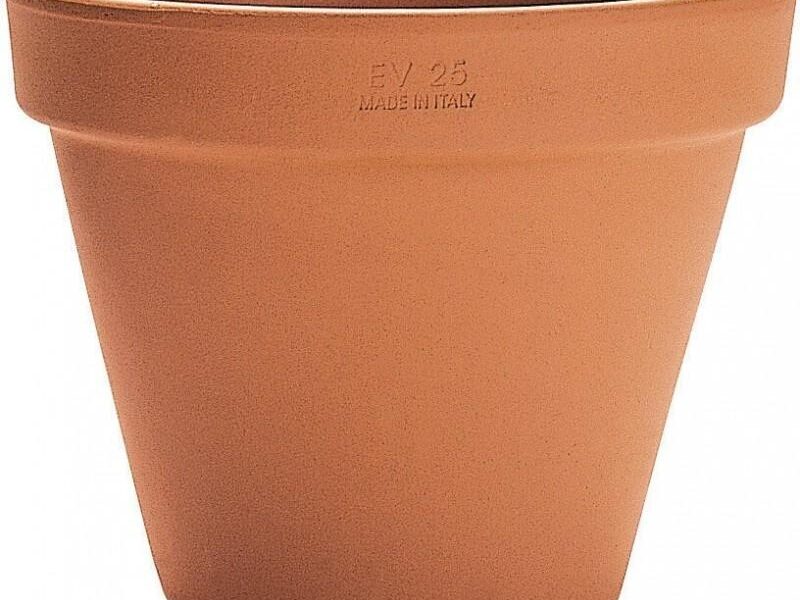What is Pot? Unpacking the Green Enigma
In a world that thrives on labels and definitions, the term “pot” floats in the air, evoking a myriad of responses, images, and interpretations. To some, it conjures thoughts of recreational enjoyment, while for others, it hints at medicinal benefits or cultural significance. But what exactly is pot, and why does it occupy such a prominent space in contemporary discourse? As society becomes increasingly open to the conversation surrounding cannabis, it’s time to delve beyond the surface and explore the multifaceted nature of this green plant. Join us as we unpack the history, uses, and societal roles of pot, shedding light on how it continues to shape our understanding of wellness, legislation, and lifestyle.
Table of Contents
- Understanding the Origins and Types of Pot
- The Science Behind Cannabis: How It Works in the Body
- Exploring the Benefits and Risks of Pot Use
- Navigating the Legal Landscape: What You Need to Know
- Q&A
- In Summary
Understanding the Origins and Types of Pot
To truly grasp the concept of pot, it is essential to explore its origins, which can be traced back centuries. Cannabis, the plant from which pot is derived, has been utilized for medicinal, recreational, and industrial purposes throughout history. Ancient civilizations, such as the Chinese and Egyptians, recognized the potential of cannabis for its psychoactive properties and healing benefits. Over time, various cultures cultivated unique strains, leading to a diverse array of pot types available today. The evolution of cultivation methods and increasing legalization in different parts of the world have further transformed public perception and accessibility of pot.
Today, pot can be categorized into several types, each offering distinct characteristics and effects. Common classifications include:
- Sativa: Known for its uplifting and energizing effects, often used during the day.
- Indica: Typically associated with relaxation and sedation, making it popular for evening use.
- Hybrid: A combination of sativa and indica, providing a balanced experience tailored to individual preferences.
Moreover, pot can be presented in various forms, such as:
- Flower: The most recognizable form, often smoked or vaporized.
- Concentrates: Highly potent extracts used for dabbing or in edibles.
- Edibles: Food products infused with cannabis, offering an alternative consumption method.
The Science Behind Cannabis: How It Works in the Body
Cannabis interacts with the human body primarily through a complex network known as the endocannabinoid system (ECS), which plays a crucial role in regulating various physiological processes. The ECS consists of endocannabinoids, receptors, and enzymes. The two main types of receptors, CB1 and CB2, are predominantly found in the brain and immune system, respectively. When cannabis is consumed, the active compounds, particularly cannabinoids like THC and CBD, bind to these receptors, triggering a variety of effects. Some of these include:
- Altered mood: THC can produce feelings of euphoria or relaxation.
- Pain relief: Cannabinoids may reduce pain and inflammation.
- Appetite stimulation: Commonly referred to as the “munchies”.
- Neuroprotection: CBD shows promise in protecting neurons from damage.
The specific effects experienced can vary greatly depending on individual biology, strain potency, and method of consumption. Interestingly, the balance between THC and CBD can influence therapeutic outcomes. This balance can be depicted in the following table, showcasing different cannabis strains and their cannabinoid profiles:
| Strain Name | THC Content (%) | CBD Content (%) |
|---|---|---|
| Blue Dream | 24 | 2 |
| ACDC | 1 | 20 |
| Girl Scout Cookies | 28 | 1 |
| Pineapple Express | 26 | 0.5 |
Exploring the Benefits and Risks of Pot Use
Pot, commonly known as marijuana, has gained significant attention in recent years, both for its potential therapeutic benefits and its contentious position in society. Advocates highlight its ability to alleviate symptoms such as chronic pain, anxiety, and nausea. Some of the benefits include:
- Relief of Chronic Pain: Many users report reduced discomfort, making it a popular alternative to traditional pain relief methods.
- Improved Mental Health: Research suggests that certain strains may help with anxiety and depression.
- Increased Appetite: Frequently used by patients undergoing treatments that lead to appetite loss, such as chemotherapy.
On the flip side, the use of pot is not without its risks, which can vary depending on individual circumstances and usage patterns. Users should be aware of potential drawbacks such as:
- Cognitive Impairment: Regular use, especially in adolescents, can negatively impact memory and learning.
- Addiction Potential: Some individuals may develop a dependency, experiencing withdrawal symptoms when not using.
- Legal Consequences: Depending on the jurisdiction, using or possessing pot can lead to legal issues.
| Benefit | Risk |
|---|---|
| Chronic Pain Relief | Cognitive Impairment |
| Anxiety Reduction | Addiction Potential |
| Appetite Stimulation | Legal Consequences |
Navigating the Legal Landscape: What You Need to Know
Understanding the legal framework surrounding cannabis is crucial for anyone interested in the subject. As legislation varies significantly from one jurisdiction to another, it’s essential to stay informed about the specific laws that apply to your area. Here are some key points to consider:
- State vs. Federal Law: In some regions, cannabis may be legal for medical or recreational use, while it remains illegal at the federal level.
- Licensing and Regulation: Growing, selling, or using cannabis often requires specific licenses and adherence to local regulations.
- Public Usage Restrictions: Even in places where cannabis is legal, there may be restrictions on where you can consume it.
Moreover, the implications of cannabis legalization extend beyond recreational use. It’s increasingly incorporated into discussions surrounding health care, social justice, and economic development. Legalization can lead to both opportunities and challenges:
- Tax Revenue: Legal sales can generate significant tax revenue for states that can be reinvested in public services.
- Criminal Justice Reform: Decriminalization efforts aim to address past injustices linked to cannabis prohibition.
- Market Growth: The cannabis industry presents numerous business opportunities, from cultivation to retail.
| Area | Legal Status | Notes |
|---|---|---|
| Medical Use | Legal in many states | Prescriptions required in most cases |
| Recreational Use | Varies by state | Not all states have legalized |
| Possession Limits | State-specific | Overages may lead to legal issues |
Q&A
Q&A: Exploring the World of Pot
Q: What is “pot”?
A: “Pot” is a colloquial term commonly used to refer to marijuana, a plant that has been utilized for centuries for its psychoactive properties and medicinal benefits. Scientifically known as Cannabis sativa, this versatile herb contains compounds called cannabinoids, with tetrahydrocannabinol (THC) being the primary psychoactive ingredient.
Q: How is pot consumed?
A: Pot can be consumed in various ways. The most traditional method involves smoking dried flowers in joints, pipes, or bongs. Additionally, it can be vaporized or ingested through edibles, which are food products infused with cannabinoid extracts. There are also tinctures, oils, and topicals that offer alternative methods of consumption for varying effects and therapeutic applications.
Q: What are the effects of pot?
A: The effects of pot can vary widely based on the strain, consumption method, and individual tolerance. Commonly reported effects include relaxation, euphoria, altered sensory perception, and increased appetite. However, some may experience anxiety or paranoia, particularly with higher THC concentrations. The intensity and duration of these effects depend on various factors, including dosage and personal body chemistry.
Q: Is pot legal?
A: The legality of pot varies significantly around the world. In some countries and states, marijuana is fully legalized for both recreational and medicinal use, while others allow only medical use or have not yet legalized it at all. As societal attitudes evolve and more research into its benefits and risks is conducted, the legal landscape continues to change.
Q: What are the medicinal uses of pot?
A: Pot has been recognized for its potential medicinal properties. Patients use it to manage conditions such as chronic pain, anxiety, epilepsy, and nausea associated with chemotherapy. Cannabidiol (CBD), another compound found in cannabis, is often extracted and utilized for its therapeutic effects without the psychoactive high associated with THC.
Q: Are there any health risks associated with pot?
A: While many people enjoy pot with minimal adverse effects, some health risks exist. Regular use, particularly in adolescents, may impact cognitive development and mental health. Furthermore, smoking marijuana can have similar negative effects on lung health as tobacco smoke. It’s essential to be mindful of these risks and to consider personal and familial health histories.
Q: What should someone know before trying pot for the first time?
A: If you’re considering trying pot for the first time, it’s crucial to educate yourself about its effects, dosage, and legal status in your area. Start with a low dose, especially if you’re consuming edibles, as their effects can be more potent and longer-lasting. Be in a comfortable environment with trusted individuals, and listen to your own body and instincts throughout the experience.
Q: How does pot affect society?
A: The societal impacts of pot are complex and multifaceted. Legalization has sparked discussions about criminal justice reform, socio-economic impacts, and public health. As societies grapple with these changes, opinions remain divided, with debates around issues such as regulation, taxation, and the implications of widespread use.
By exploring these questions, we hope to shed light on what pot is, its uses, effects, and the broader context in which it exists today.
In Summary
the exploration of “what is pot” reveals a multifaceted plant steeped in history, culture, and controversy. From its ancient uses as a remedy to its modern-day status as a subject of legal debate and social change, cannabis has woven itself into the fabric of societies around the globe. Understanding pot—its benefits, risks, and the nuances of its legality—offers insight into a complex issue that impacts millions of lives.
As we move forward, it is essential to approach cannabis with an informed perspective, recognizing both its potential and its challenges. Whether viewed through the lens of medicine, recreation, or legislation, the conversation surrounding pot is ever-evolving. Embracing this dialogue allows us to better understand not just the plant itself, but the evolving cultural and social dynamics it influences. So, as you continue your journey through the world of cannabis, may you remain curious, discerning, and open to the ever-expanding possibilities that lie ahead.



